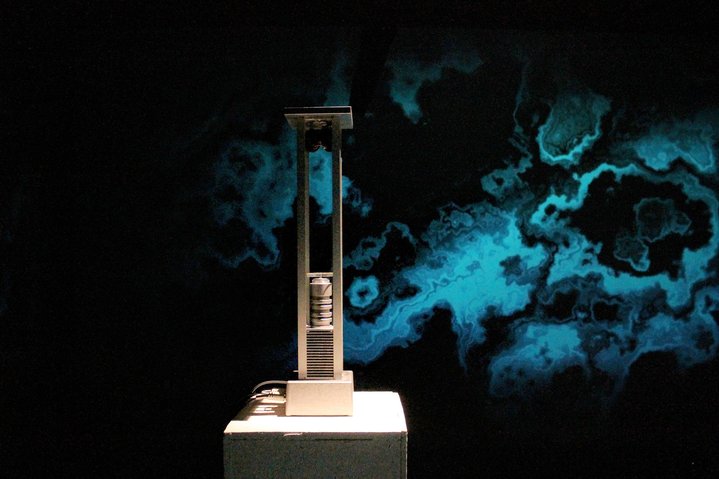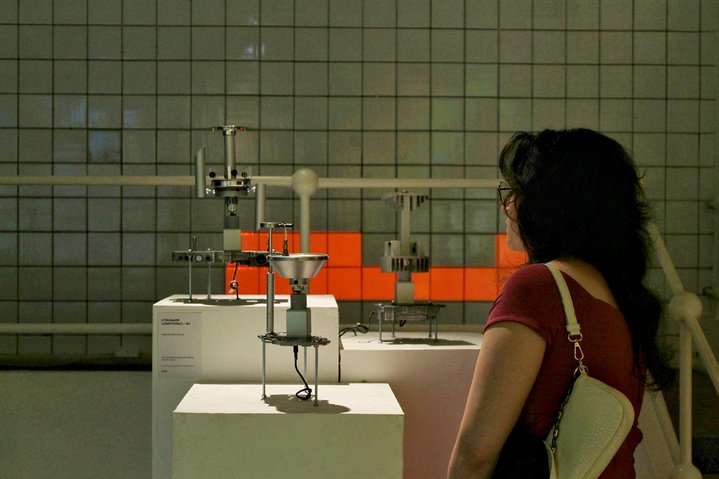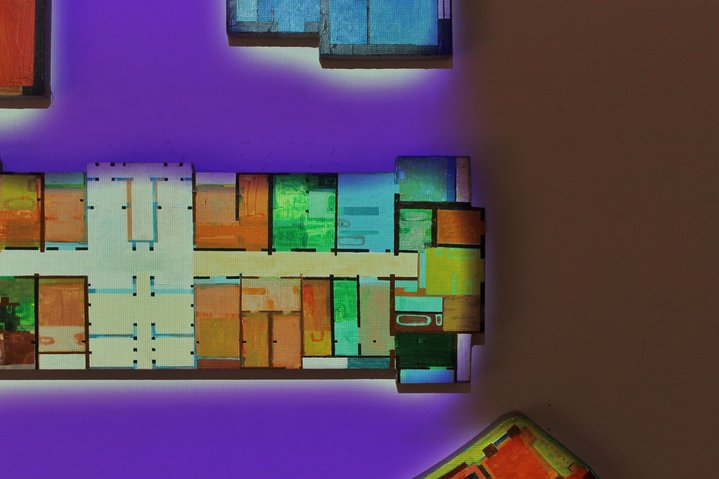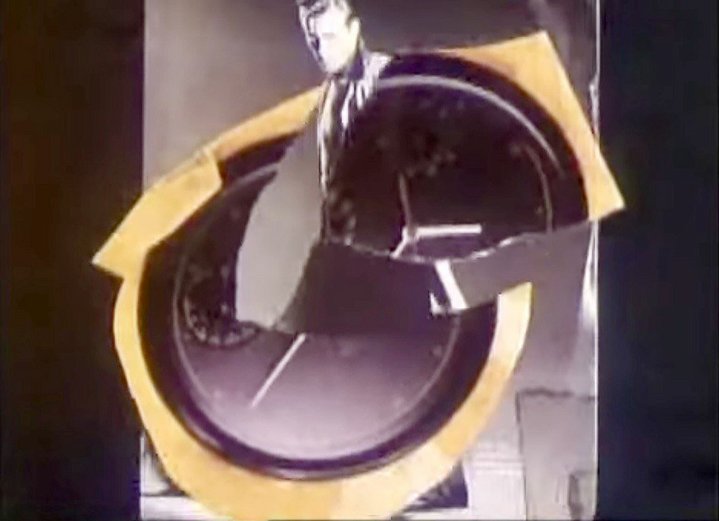Sergey Kuryokhin: A Legacy of Avant-Garde Innovation
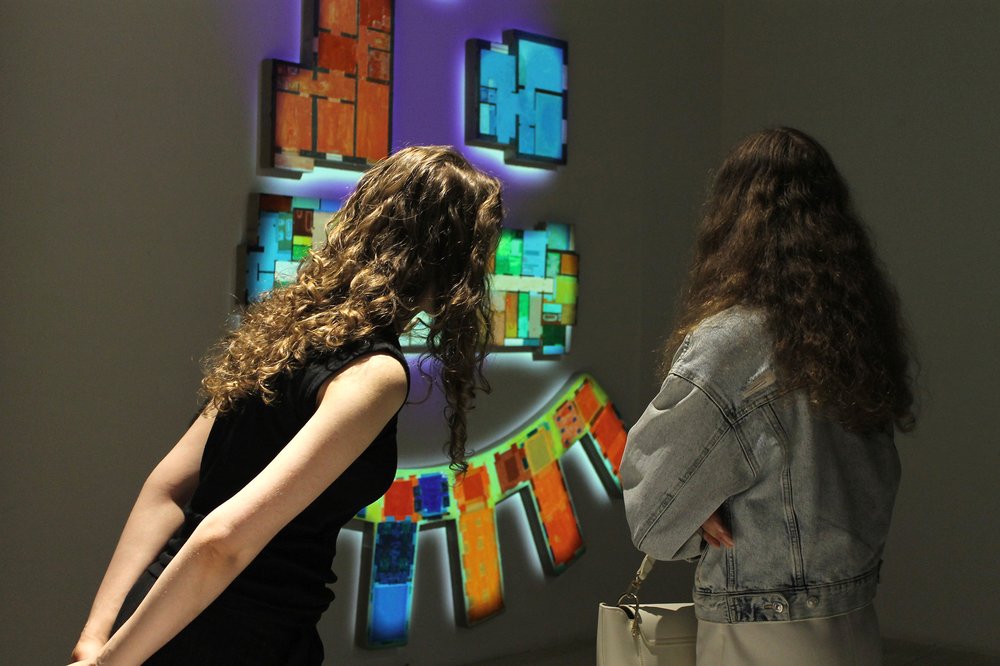
Sergey Kuryokhin Museum: PROTOTYPE #8. Exhibition view. Photo by Ulyana Vasilieva. Courtesy of Kuryokhin Centre for Contemporary Art
Sergey Kuryokhin revolutionized Soviet and Russian avant-garde music as a pianist, composer, and organizer of large-scale performances. His bountiful legacy continues through the Sergey Kuryokhin Centre of Contemporary Art in St Petersburg which opened to the public this Autumn.
Kapitan (Captain), the nickname by which Sergey Kuryokhin (1954–1996) is known, aptly signals his pivotal role: not merely a pianist and composer, but an organizer, director, and producer of large-scale performances – and creator of postmodernist hoaxes and media mystifications.
Kuryokhin’s creative legacy still speaks to the present: in 1997, the Sergey Kuryokhin International Festival SKIF was founded in New York; in 1998, the Sergey Kuryokhin International Festival was held in St. Petersburg; in 2004, the Kuryokhin Centre of Contemporary Art was established; since 2009 there is the Kuryokhin Prize, an annual independent contemporary art award. Solo exhibitions took place in 2019 at the Moscow Museum of Contemporary Art and in 2024, at the Russian Museum in St. Petersburg. This October the Kuryokhin Centre of Contemporary Art has opened to the public in a renovated former Soviet cinema, converted into a five-hall concert and exhibition venue with state of the art technology.
To assess Kuryokhin’s influence on contemporary Russian culture requires tracing numerous threads of his various artistic relationships. A rigorous honing of aesthetics – and a rejection of established forms – defined his evolution. More precisely, he can be termed an ‘avant-gardist’ – an uncompromising proponent of the early 20th-century avant-garde. In 1988 he met the composer John Cage who came to visit USSR at the height of Perestroika, an encounter that led to an improvised joint action ‘Water Symphony’ with the participation of artists at the studio of St.Petersburg artist Sergey ‘Africa’ Bugaev (b. 1966).
Born in Murmansk to a naval commander’s family, Sergey Kuryokhin spent his childhood in Crimea before moving to Leningrad. There he entered the Institute of Culture – simultaneously in three departments, as composer, pianist, and conductor – but soon lost interest in official study and left without a diploma, a fact that constrained his performance opportunities in the Soviet Union. From the outset, his practice was ecumenical: a virtuoso pianist who moved effortlessly across genres, he played in jazz ensembles, handled keyboards for several rock bands, and effectively served as a sound producer, shaping their sonic identity. ‘I like any kind of music, as long as it is skilfully organised… any sound that is organised with skill, I listen to with pleasure,’ he remarked.
Kuryokhin’s first album of piano improvisations, The Ways to Freedom (1981), appeared on the independent London label Leo Records, founded by Soviet émigré Leonid (‘Leo’) Feigin to promote avant-garde jazz. Issued unofficially, the Leningrad recordings were spirited abroad via sympathetic diplomats; Kuryokhin’s only remuneration was a handful of copies of the LP.
Just over a decade later, during the Perestroika years in St Petersburg, Kuryokhin gained access to the largest concert halls and virtually unlimited organisational resources for his project Pop-Mechanics, which he conceived as an utterly free form of artistic expression.
On 14 April 1984, the group Pop-Mechanika gave its first performance in Moscow. The name, an abbreviation of a well-known magazine Popular Mechanics, reflected the merging of music and action on stage according to the principle of “montage of attractions,” formulated earlier by Eisenstein. Pop-Mechanika was closely related to improvisational collectives such as Sun Ra Arkestra, Frank Zappa & The Mothers of Invention, the Willem Breuker Kollektief, and Shibusashirazu Orchestra, surpassing them in both musical and performative madness.
A four-disc album released in 1997 bore the fitting title Divine Madness – a description given to Pop-Mechanics by the Liverpool press in 1989 during their first visit to the West.
“The main principle of constructing a programme is that each group has absolutely no idea what has happened on stage before they come on, what will happen during their performance, and, naturally, what will happen after they leave. Some believe they are playing at a classical concert, others think it’s a rock performance, for others it’s a beauty contest or a military parade, and so on. The performance is built according to a logical principle I developed many years ago, somewhat reminiscent of a madhouse – quiet or riotous, depending on the flow. As I constantly expanded the scale of the show, it became clear that, ideally, the entire country was bound to become my field of action,” Kuryokhin admitted.
He clearly aspired to create a Gesamtkunstwerk in the spirit of Wagner, about whom he once remarked: “Many of Wagner’s ideas are very close to me, although I can’t stand his music. What appeals to me is his grand scale.”
Pop-Mechanika was inseparable from the Leningrad art scene of the late 1980s and early 1990s. Members of the New Artists collective, led by Timur Novikov (1958–2002), designed stage sets and regularly took part in their performances. Novikov and Sergey ‘Afrika’ Bugaev (b. 1966), using two inflatable rubber dinosaur figures, staged “The Russian Folk Amusement: The Battle of the Dinosaur with the Snake.”
The Pop-Mechanika stage also saw the first appearances of Vladislav Mamyshev-Monroe (1969–2013) in his iconic Marilyn persona. Costumes for the performances were created by fashion designer Sergey Chernov (b. 1962), who belonged to the same circle.
At the turn of the 1990s, when Novikov turned from the New Artists movement toward New Russian Classicism, or Neo-Academism, painters Oleg Maslov (b. 1965) and Viktor Kuznetsov (b. 1960), who worked together under the Latinized names Oleg Oleaginus and Viktor Faberferrarius, performed in Pop-Mechanika shows dressed up as ancient heroes.
Among the participants of several major concerts was Moscow artist German Vinogradov (1957–2022), who created the sound sculpture Bikapo.
Among the instruments used by Kuryokhin on stage was the Ironophone (Utyugon), invented in 1982 by Timur Novikov and Ivan Sotnikov (b. 1961): an old wooden table through which strings of different lengths and pitches were passed, with irons suspended from them. When swung, they produced a rich spatial sound, earning the invention the nickname “the first Russian analogue synthesiser.”
In 1993, Inal Savchenkov (b. 1966) and the group ‘Engineers of Art’ made the stop-motion animation film Cupid’s Arrow to Kuryokhin’s music, and Kuryokhin planned to create a feature film with the artists at Lenfilm studio.
Kuryokhin and Novikov were connected not merely biographically – both musician and artist belonged to the same generation and died prematurely, at their creative prime. Their artistic paths were closely intertwined: they emerged at the historical juncture of the 1980s and 1990s, when the ideological barriers of the Soviet era briefly gave way to the near-absolute freedom of the early post-Soviet years, helping to define the ideas and aesthetics of contemporary Russian culture.
Kuryokhin remains present in the current cultural field as the creator of the Pop-Mechanika orchestra and as the author of a media hoax – or, more precisely, a “media virus” – the famous “Lenin Was a Mushroom” episode. In January 1991, during a primetime broadcast on state television, Kuryokhin solemnly told viewers that the organiser of the Russian Revolution, Vladimir Lenin, was in fact a mushroom. The information shocked the unprepared consciousness of former Soviet citizens, and the effect was comparable to Orson Welles’ War of the Worlds broadcast. The show was filmed in the flat of biologist Vladimir Kulikov, head of the international association ‘Mushrooms for Peace,’ who later, in the 2020s, collaborated with St Petersburg painter and psychedelic abstractionist Vlad Kulkov (b. 1986).
One of Kuryokhin’s more memorable ideas from the early 1990s was his vision for the delivery of Western humanitarian aid to Russia: “From magnificent Boeings, perfumes by Christian Dior, lipstick, tins of stew, flour, religious books, Japanese video equipment and condoms rain down on Leningrad. It’s a grand spectacle! And the element of surprise – imagine sitting at home, having tea, and suddenly women’s knickers by Gaultier fly through your window. Nobody would take offence.” This concept was later echoed in the 1996 performance ‘Gratifying the Neva’ by the group FNO (Found Clothes Factory), founded by artists Olga “Tsaplya” Yegorova (b. 1968) and Natalia “Gluklya” Pershina-Yakimanskaya (b. 1969), during which dresses were dropped from a helicopter.
In his final years, Kuryokhin aligned himself with the far-right movement led by philosopher Alexander Dugin and writer Eduard Limonov, participating in their campaigns. He was also deeply intrigued by Aleister Crowley’s ideas and planned collaborations with British groups ‘Current 93’, ‘Death in June’, and ‘Coil’.
The final, 418th Pop-Mechanika performance was staged in an overtly totalitarian style reminiscent of Laibach from the Neue Slowenische Kunst movement. Kuryokhin’s turn toward Russian fascist and occult ideas remains a subject of debate. In the 1990s, Timur Novikov also moved toward conservative positions, declaring the foundation of the New Academy of Fine Arts. It is noteworthy that many Russian musicians who once collaborated with Kuryokhin – saxophonist Igor Butman, guitarist Viktor Sologub, saxophonist Sergey Letov, and cellist Vladislav Makarov – today hold strongly pro-government views. Kuryokhin died in July 1996 of a rare disease – cardiac sarcoma. One thing is clear: his rightward shift was, in essence, a manifestation of the avant-garde’s anti-bourgeois stance – and in that sense, he remained true to himself.







